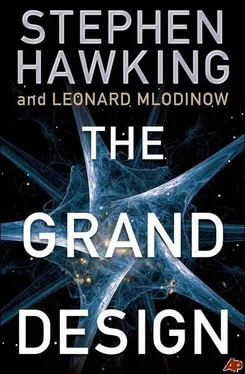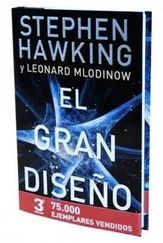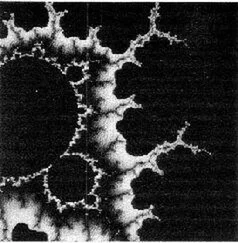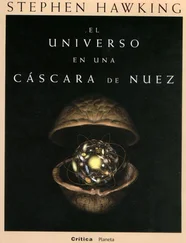Another of the main tenets of quantum physics is the uncertainty principle, formulated by Werner Heisenberg in 1926. The uncertainty principle tells us that there are limits to our ability to simultaneously measure certain data, such as the position and velocity of a particle. According to the uncertainty principle, for example, if you multiply the uncertainty in the position of a particle by the uncertainty in its momentum (its mass times its velocity) the result can never be smaller than a certain fixed quantity, called Planck’s constant. That’s a tongue-twister, but its gist can be stated simply: The more precisely you measure speed, the less precisely you can measure position, and vice versa. For instance, if you halve the uncertainty in position, you have to double the uncertainty in velocity. It is also important to note that, compared with everyday units of measurement such as meters, kilograms, and seconds, Planck’s constant is very small. In fact, if reported in those units, it has the value of about 6/10,000,000,000,000,000,000,000,000,000,000,000. As a result, if you pinpoint a macroscopic object such as a soccer ball, with a mass of one-third of a kilogram, to within 1 millimeter in any direction, we can still measure its velocity with a precision far greater than even a billionth of a billionth of a billionth of a kilometer per hour. That’s because, measured in these units, the soccer ball has a mass of 1/3, and the uncertainty in position is 1/1,000. Neither is enough to account for all those zeroes in Planck’s constant, and so that role falls to the uncertainty in velocity. But in the same units an electron has a mass of.000000000000000000000000000001, so for electrons the situation is quite different. If we measure the position of an electron to a precision corresponding to roughly the size of an atom, the uncertainty principle dictates that we cannot know the electron’s speed more precisely than about plus or minus 1,000 kilometers per second, which is not very precise at all.
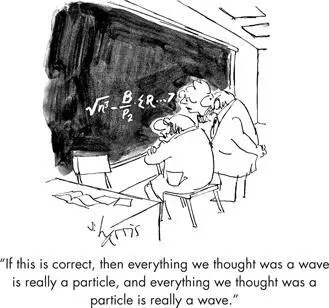
According to quantum physics, no matter how much information we obtain or how powerful our computing abilities, the outcomes of physical processes cannot be predicted with certainty because they are not determined with certainty. Instead, given the initial state of a system, nature determines its future state through a process that is fundamentally uncertain. In other words, nature does not dictate the outcome of any process or experiment, even in the simplest of situations. Rather, it allows a number of different eventualities, each with a certain likelihood of being realized. It is, to paraphrase Einstein, as if God throws the dice before deciding the result of every physical process. That idea bothered Einstein, and so even though he was one of the fathers of quantum physics, he later became critical of it.
Quantum physics might seem to undermine the idea that nature is governed by laws, but that is not the case. Instead it leads us to accept a new form of determinism: Given the state of a system at some time, the laws of nature determine the probabilities of various futures and pasts rather than determining the future and past with certainty. Though that is distasteful to some, scientists must accept theories that agree with experiment, not their own preconceived notions.
What science does demand of a theory is that it be testable. If the probabilistic nature of the predictions of quantum physics meant it was impossible to confirm those predictions, then quantum theories would not qualify as valid theories. But despite the probabilistic nature of their predictions, we can still test quantum theories. For instance, we can repeat an experiment many times and confirm that the frequency of various outcomes conforms to the probabilities predicted. Consider the buckyball experiment. Quantum physics tells us that nothing is ever located at a definite point because if it were, the uncertainty in momentum would have to be infinite. In fact, according to quantum physics, each particle has some probability of being found anywhere in the universe. So even if the chances of finding a given electron within the double-slit apparatus are very high, there will always be some chance that it could be found instead on the far side of the star Alpha Centauri, or in the shepherd’s pie at your office cafeteria. As a result, if you kick a quantum buckyball and let it fly, no amount of skill or knowledge will allow you to say in advance exactly where it will land. But if you repeat that experiment many times, the data you obtain will reflect the probability of finding the ball at various locations, and experimenters have confirmed that the results of such experiments agree with the theory’s predictions.
It is important to realize that probabilities in quantum physics are not like probabilities in Newtonian physics, or in everyday life. We can understand this by comparing the patterns built up by the steady stream of buckyballs fired at a screen to the pattern of holes built up by players aiming for the bull’s-eye on a dartboard. Unless the players have consumed too much beer, the chances of a dart landing near the center are greatest, and diminish as you go farther out. As with the buckyballs, any given dart can land anywhere, and over time a pattern of holes that reflects the underlying probabilities will emerge. In everyday life we might reflect that situation by saying that a dart has a certain probability of landing in various spots; but if we say that, unlike the case of the buckyballs, it is only because our knowledge of the conditions of its launch is incomplete. We could improve our description if we knew exactly the manner in which the player released the dart, its angle, spin, velocity, and so forth. In principle, then, we could predict where the dart will land with a precision as great as we desire. Our use of probabilistic terms to describe the outcome of events in everyday life is therefore a reflection not of the intrinsic nature of the process but only of our ignorance of certain aspects of it.
Probabilities in quantum theories are different. They reflect a fundamental randomness in nature. The quantum model of nature encompasses principles that contradict not only our everyday experience but our intuitive concept of reality. Those who find those principles weird or difficult to believe are in good company, the company of great physicists such as Einstein and even Feynman, whose description of quantum theory we will soon present. In fact, Feynman once wrote, “I think I can safely say that nobody understands quantum mechanics.” But quantum physics agrees with observation. It has never failed a test, and it has been tested more than any other theory in science.
In the 1940s Richard Feynman had a startling insight regarding the difference between the quantum and Newtonian worlds. Feynman was intrigued by the question of how the interference pattern in the double-slit experiment arises. Recall that the pattern we find when we fire molecules with both slits open is not the sum of the patterns we find when we run the experiment twice, once with just one slit open, and once with only the other open. Instead, when both slits are open we find a series of light and dark bands, the latter being regions in which no particles land. That means that particles that would have landed in the area of the dark band if, say, only slit one was open, do not land there when slit two is also open. It seems as if, somewhere on their journey from source to screen, the particles acquire information about both slits. That kind of behavior is drastically different from the way things seem to behave in everyday life, in which a ball would follow a path through one of the slits and be unaffected by the situation at the other.
Читать дальше
